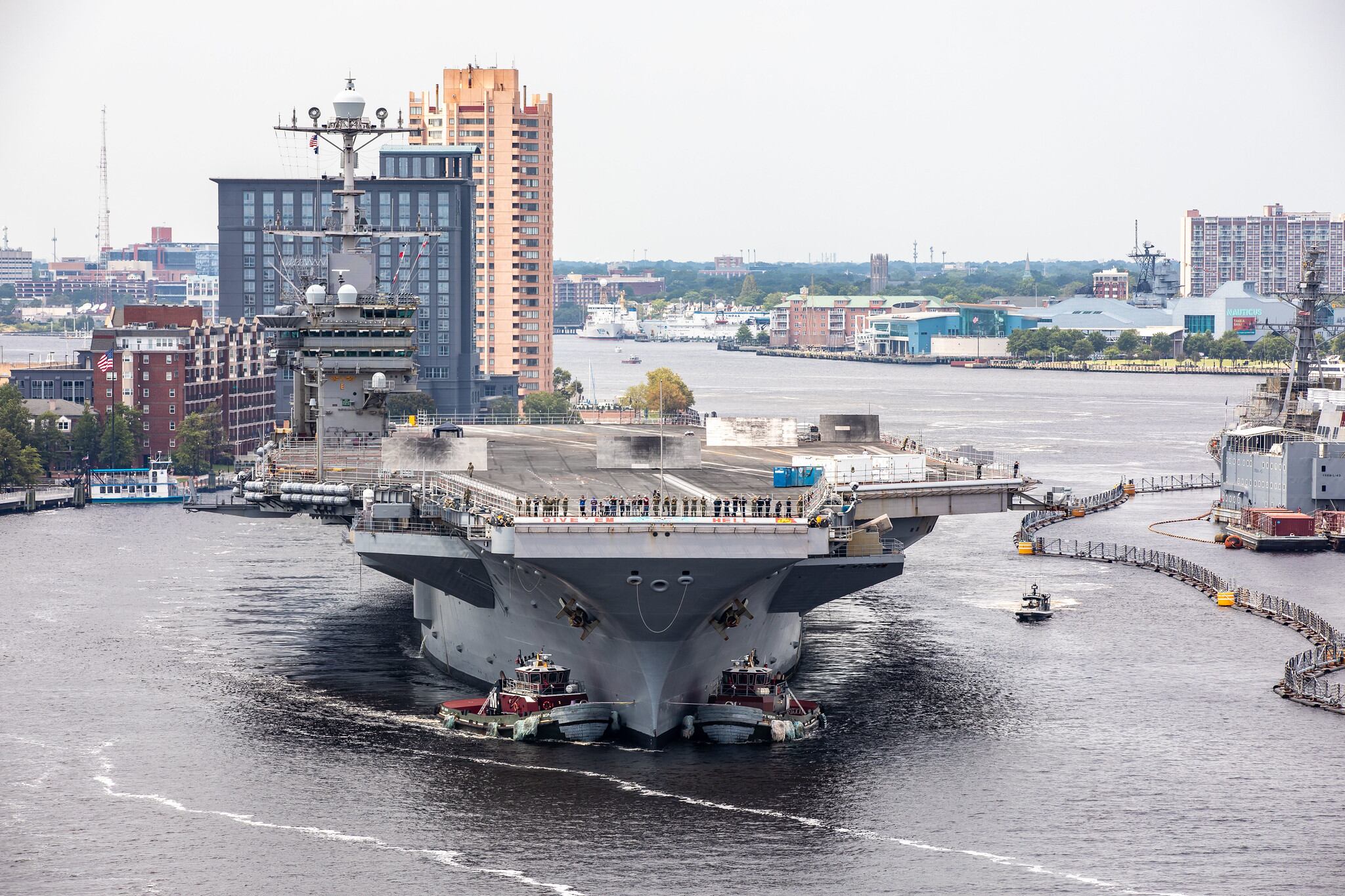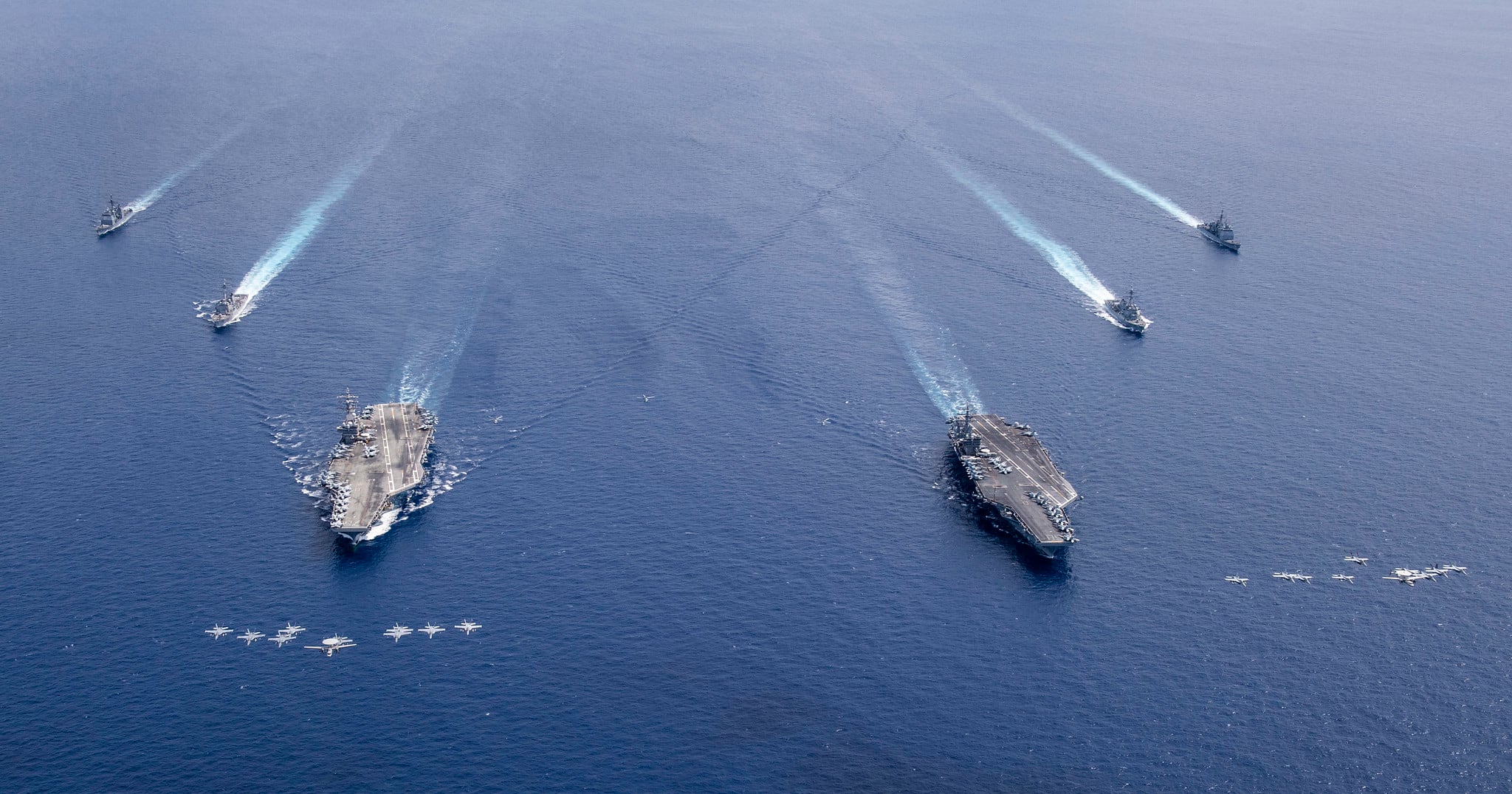WASHINGTON — The U.S. Navy’s path to 355 ships was unrealistic, prompting the Pentagon to delay the release of the Navy’s annual 30-year shipbuilding plan, the presumptive incoming head of the Office of the Secretary of Defense’s in-house think tank told Senate lawmakers Tuesday.
The Navy is required to submit to Congress a 30-year plan for shipbuilding with its budget, but did not do so this year, which has raised consternation among lawmakers of both parties who have been pushing for a larger fleet to meet what they see as a rising threat from China.
But John Whitley, Trump’s nominee to be the director of the Pentagon’s influential Cost Assessment and Program Evaluation office, told the Senate Armed Services Committee that the Navy’s plan wasn’t rooted in fiscal realities, adding it was “not a credible document.”
“It assumed there were resource constraints for five years and then assumed there were no resource constraints,” Whitley said. “And what [Secretary of Defense Mark Esper] was concerned about was that wasn’t a credible document.
“The secretary has said he’s incredibly committed to 355. His belief is it’s a number of north of 355,” Whitley said. “What he tasked the Navy and CAPE to do, and what I would do if confirmed, is be working with the Navy to get a credible path to a number as quickly as possible that’s north of 355.”
The 30-year shipbuilding plan got caught up in Pentagon politics after an Office of Management and Budget memo sent to the Pentagon ahead of the FY21 budget submission asked why the forthcoming budget shrank the size of the Navy through early ship decommissionings and curtailed shipbuilding instead of growing to 355 ships as President Trump campaigned on.
In the wake of that memo, which was obtained first by Bloomberg then other outlets including Defense News, then-newly minted Defense Secretary Esper told Defense News in an interview ahead of the budget rollout that he was fully committed to 355 ships but said his office would lead the effort to craft a workable force structure to get there.
Since then, Defense News obtained a CAPE analysis that called for a fleet of dozens of unmanned surface vessels, unmanned underwater vehicles and fewer aircraft carriers.
Sen. Roger Wicker, R-Miss., citing Defense News’ reporting, expressed skepticism about CAPE’s desire to make the Navy “lighter,” with a fleet of only nine aircraft carriers, from eleven. Whitley declined to discuss force mix directly but cited Navy and CAPE analysis in supporting a fleet that could fight more spread out over a large geographic area instead of concentrated around an aircraft carrier.
“Those are the key attributes that will be guiding the analyses underway right now,” Whitley said.
Whitley, the Army’s comptroller, has been performing the duties of CAPE director and has been working with Esper to identify lower priority acquisition programs.
CAPE serves as the department’s internal think tank, creating its own analysis of programs and strategies that are sometimes used to offset those crafted by the services. CAPE, under its previous chief, Robert Daigle, was central in both the decision to require the Air Force buy the F-15X, as well as the call to decommission the Truman aircraft carrier.

‘We Need More Money’
In recent years the Navy has dug its heels in on readiness and said repeatedly that it will not hollow out the fleet of trained and ready crews in order to buy more ships. In January, the Navy’s top officer called explicitly for a larger Navy budget, saying the National Defense Strategy was clearly a maritime strategy.
“Here’s the deal, we need more money,” said Chief of Naval Operations Adm. Michael Gilday at the annual Surface Navy Association. “We need more top line.
“If you believe that we require overmatch in the maritime domain, if you believe that in order to execute distributed maritime operations and to operate forward in numbers now that we need more iron, then, yes, we need more top line.”
One of the main factors holding back the Navy from spending more on shipbuilding is the requirement to fund, from its shipbuilding accounts, the $109-billion, 12-ship Columbia-class ballistic missile submarine program. That program, Gilday said, was going to eat shipbuilding alive without more money in the pot.
To compare, Gilday said the Navy’s budget in the 1980s — when it was building the Ohio-class ballistic missile submarine — was much higher than today’s budget. Even a minor single percentage realignment would make a difference, Gilday said.
“One percent of the DoD budget would be $7 billion per year in the shipbuilding accounts,” the CNO explained. “If I make some comparison from today and I go back to the 1980s, there are some similarities there.”
“Right now we are building the Columbia class submarine. That is my highest priority,” he added. “By the time we sundown the Ohio class, we’ll have 42 years in those hulls. We need to get Columbia out there.
“Now, let’s go back to when we were building Ohio in the 1980s: It was about 20 percent of the shipbuilding budget. Right now, Columbia is about 20-25 percent. In FY26-30 it’s going to be about 32 percent. That’s a lot of dough. In the 1980s, the Navy’s percentage of the DoD budget was 38 percent. Right now, it’s 34. So, I think historically I have a case to make.”
But Esper has been resistant to realigning the Defense budget to pay for a larger fleet, notwithstanding the impact of Columbia on the Navy’s budget. In his interview with Defense News, he said all the services have bills to pay
“Clearly, the Columbia is a big bill, but it’s a big bill we have to pay,” Esper said. “That’s the Navy’s bill. The Air Force has a bill called bombers and ground-based strategic deterrent, so that’s a bill they have to pay.”
More Unmanned
In its search to get a 355-ship fleet, the Defense Department has warmed to the idea of leaning heavily on a fleet of unmanned surface vessels to augment the surface fleet’s strike capacity.
Esper told Defense News he wanted to push aggressively toward unmanned and lightly manned ships to get to 355 ships over the next decade.
“What we have to tease out is, what does that future fleet look like?” Esper said. “I think one of the ways you get there quickly is moving toward lightly manned [ships], which over time can be unmanned.
“We can go with lightly manned ships, get them out there. You can build them so they’re optionally manned and then, depending on the scenario or the technology, at some point in time they can go unmanned. To me that’s where we need to push. We need to push much more aggressively. That would allow us to get our numbers up quickly, and I believe that we can get to 355, if not higher, by 2030.”
But Congress has signaled skepticism of that plan, and while it backs integrating more unmanned, it doesn’t want the Navy charging ahead with unproven technologies and betting on the come that unmanned can get them 355 on the cheap.
Recent programs such as the littoral combat ship and the Ford-class carrier have led Congress to try and force the Navy to slow down its development of the large unmanned surface vessel, blocking the Navy from integrating a vertical launch system into it in 2020, and in 2021 Congress is poised to block the service from spending any procurement dollars on unmanned surface vessels before it has produced a fully working prototype with research and development dollars.
House Armed Services Committee’s Seapower Subcommittee Chairman Joe Courtney, D-Conn., told Defense News in June that he wants the Navy to figure out the basics of operating with unmanned surface vessels before Congress commits to a big cash outlay.
“The message I want people to understand is that we fully support the move toward unmanned, whether that’s on the surface or undersea,” Courtney told Defense News. “But we want to make sure that some of the real nuts and bolts issues … before we start building large unmanned platforms.
“We want to make sure that we don’t end up with situations like LCS where we’re trying to figure out what the mission is at the same time we’re building them.”
David B. Larter was the naval warfare reporter for Defense News.
Joe Gould was the senior Pentagon reporter for Defense News, covering the intersection of national security policy, politics and the defense industry. He had previously served as Congress reporter.




